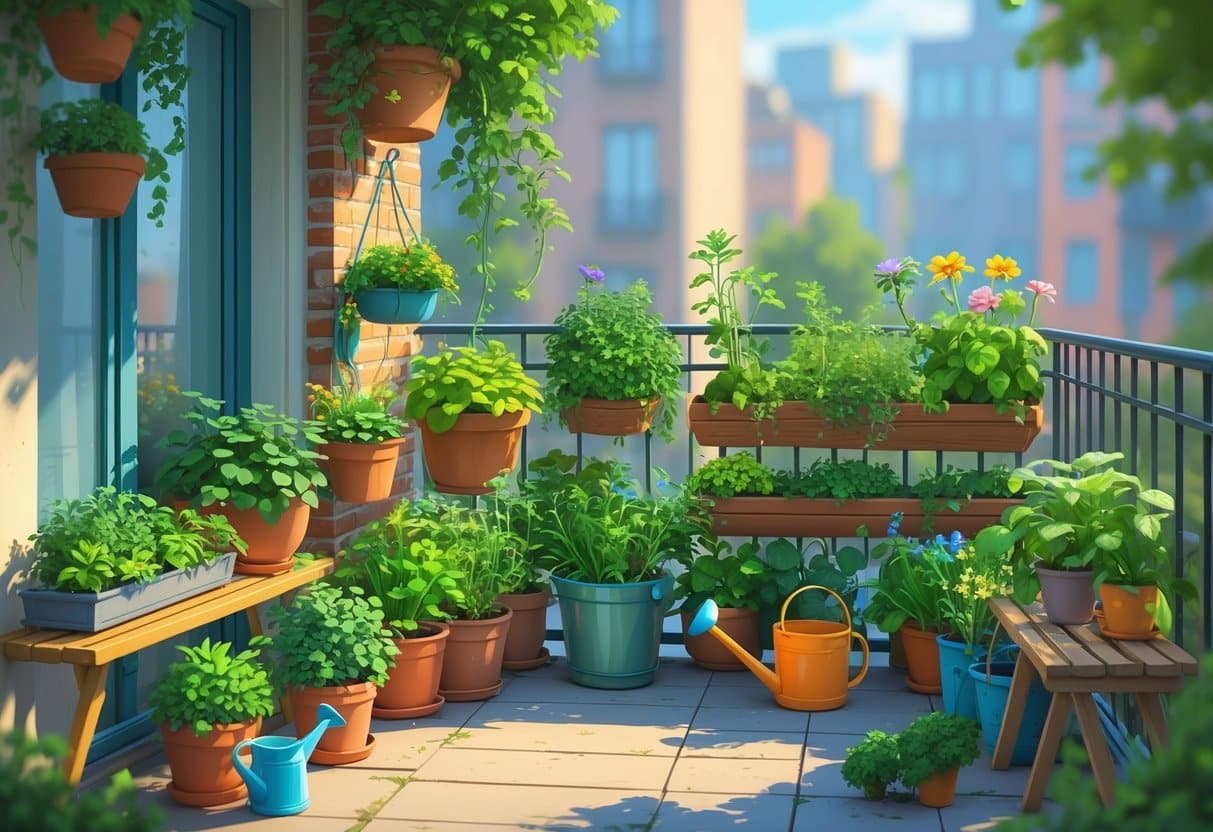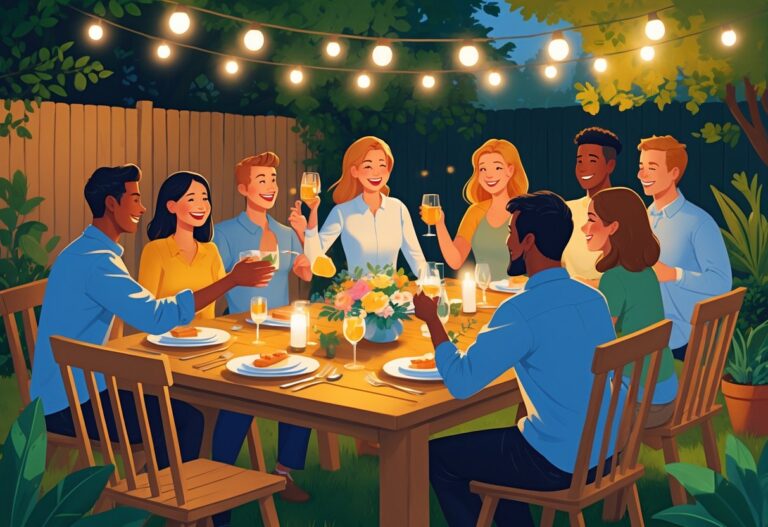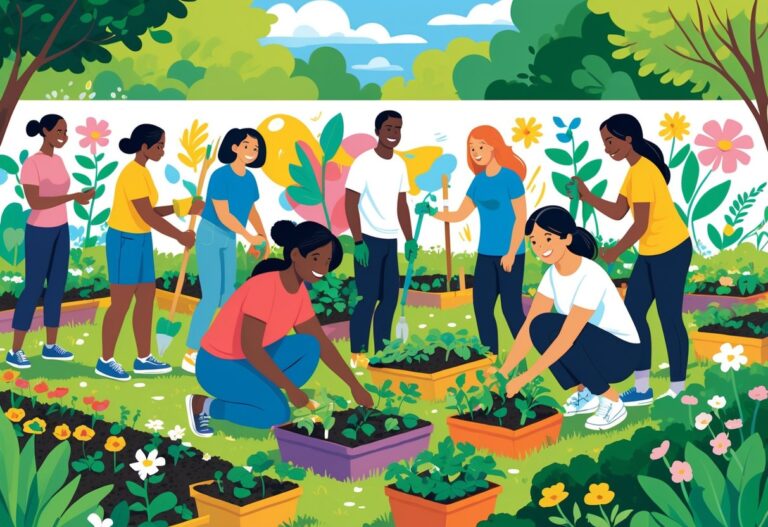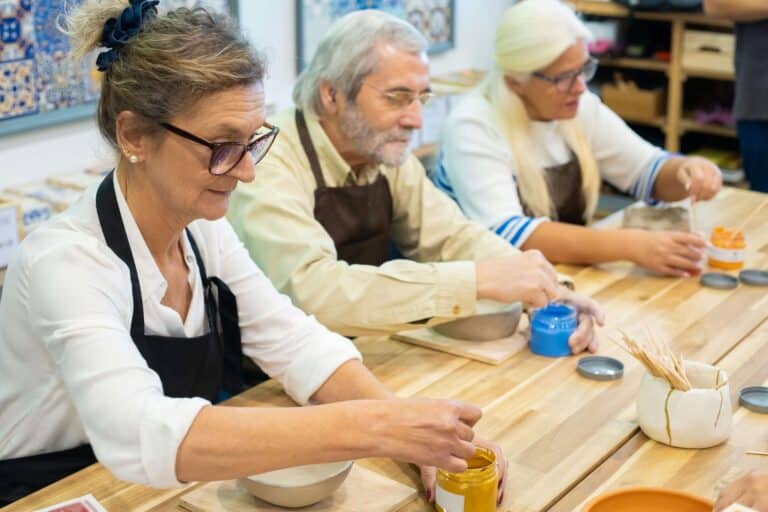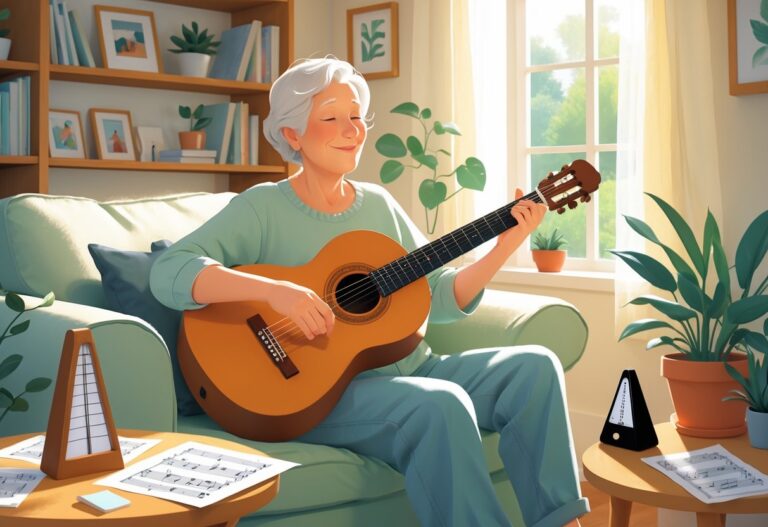You don’t need a huge backyard to create a garden that brings you joy and fresh greens. Even the tiniest balcony or patio can turn into a productive, lush space with a bit of planning.
Small space gardening unlocks possibilities for apartment dwellers and folks with limited outdoor areas. You can grow herbs, vegetables, and flowers—even in just a few square feet.
The trick to small space gardening is making smart choices. Think about which plants to grow, what containers to use, and how to use every inch of space.
You can grow anything from fresh herbs for pasta night to colorful blooms that attract pollinators. Vertical growing and creative containers let you squeeze a surprising number of plants into tiny spots.
It doesn’t matter if you’ve got a small patio, a skinny balcony, or just a sunny windowsill. You can build a garden that fits your lifestyle and your space.
The right combo of practical growing tricks and good design turns a cramped outdoor area into a cozy, green retreat.
Understanding Small Space and Balcony Gardening

Small space gardening turns limited areas into productive little jungles. It all comes down to clever design and picking the right plants for your conditions.
You’ve got to work with what you’ve got—sun, wind, space, and all. But that’s half the fun, honestly.
Defining Small Space and Balcony Gardens
Small space gardening means creating a growing spot in tight places. Think balconies, patios, windowsills, or tiny yards.
Usually, these gardens are under 100 square feet. You’ll rely a lot on containers and vertical growing tricks.
A balcony garden uses your apartment or condo balcony as the main stage. Most balconies are 25 to 80 square feet, with their own quirks like wind and weight rules.
Key features of small space gardens:
- Container-based growing – Most plants live in pots, planters, or raised beds
- Vertical focus – Use walls, railings, and hanging spots
- Multi-purpose design – Mix beauty and food
- Intensive care – More frequent watering and feeding
Small balcony gardens usually stick to herbs, leafy greens, and compact veggies. Since there’s not much soil, your plants depend on what you give them.
Common Challenges and Advantages
Main challenges:
| Challenge | Impact | Solution |
|---|---|---|
| Limited soil volume | Plants dry out fast | Use bigger pots, self-watering containers |
| Wind exposure | Can break plants, dries them out | Pick sturdy plants, add windbreaks |
| Weight limits | Restricts container size | Use lightweight mix and plastic pots |
| Temperature swings | Pots heat up and cool quickly | Place pots strategically, use mulch |
A few advantages:
Your small balcony garden gives you total control over soil, water, and where each plant goes. Container gardening lets you move things as the seasons or your mood change.
Pests are less of a headache compared to ground gardens. You can spot and fix problems fast.
With fewer plants, maintenance stays manageable. You’ll likely spend just 15-30 minutes a day during the growing season.
Assessing Your Space and Light
First, measure your available space and check weight limits. Most balconies can handle 40-80 pounds per square foot, but always double-check your lease or building rules.
For light:
- Track the sun – See which spots get morning, midday, and afternoon rays
- Count daily hours – Note how many hours of direct sun you get
- Find microclimates – Some corners stay cooler or warmer
A balcony with 6+ hours of sun can handle tomatoes, peppers, and most herbs. If you get 3-6 hours, focus on leafy greens and herbs like parsley or cilantro.
Don’t forget wind. Stand on your balcony at different times and in different weather. Notice which spots get battered and which are calm.
Consider which way your balcony faces. South-facing gets the most sun—sometimes too much. North-facing stays cooler, which is better for shade-loving plants.
Jot down how sun and shade change with the seasons. Buildings and trees can shift your light patterns.
Optimizing Vertical Space
Vertical gardening flips walls and upright areas into growing space. Wall planters, trellises, and tiered setups let you pack in more plants without hogging the floor.
Vertical Gardening Systems
Modular vertical planters stack up so you can arrange them to fit your space. Many have built-in drainage and self-watering features.
Popular types:
- Pocket planters made from fabric or felt
- Stackable towers for herbs and greens
- Hydroponic towers for soil-free growing
- Living wall panels with pre-planted greenery
Tower systems are great for leafy greens like lettuce and spinach. You can harvest from several levels in just a square or two of floor space.
Pocket planters hang on fences or walls. They’re perfect for herbs and small flowers.
Using Wall Planters and Wall-Mounted Solutions
Wall-mounted planters attach right to vertical surfaces, saving precious floor space. Mount them on balcony railings, outside walls, or even inside if you want.
A few tips:
- Use anchors strong enough for the weight of wet soil
- Space planters 12-18 inches apart for air flow
- Add drainage to avoid water damage
- Pick lightweight containers for easier installation
Rail planters clip onto balcony edges. They’re awesome for herbs and trailing plants like cherry tomatoes.
Window box-style wall planters hold several plants. Mount them at eye level for easy care and picking.
Incorporating Trellises and Climbing Plants
Trellises help climbing plants grow up, not out. You can make them from wood, metal, or even plastic.
Best climbing plants for small spaces:
- Peas and beans for food
- Cucumbers for vertical veggies
- Morning glories for color
- Ivy for year-round green
Install trellises against a wall or use freestanding ones. Space supports 6-8 inches apart so plants can grab on.
Wire mesh or netting works too—just attach it to a frame for stability.
Train plants by gently winding their stems around the supports. Start early so they learn to climb.
Leveraging Plant Shelves and Tiered Planters
Plant shelves give you several growing levels in one spot. Tiered planters stack containers at different heights, boosting how many plants you can fit.
Shelf ideas:
- Ladder-style with 3-4 levels
- Corner shelves for awkward spaces
- Hanging shelves from the ceiling or walls
- Rolling carts you can move with the sun
Put taller plants on the lowest shelves. Shorter or trailing ones go up top.
Space shelves 18-24 inches apart so plants have room to grow.
Tiered planters work like stairs. Water from the top trickles down, saving you time.
Creative Containers and Planters for Small Spaces
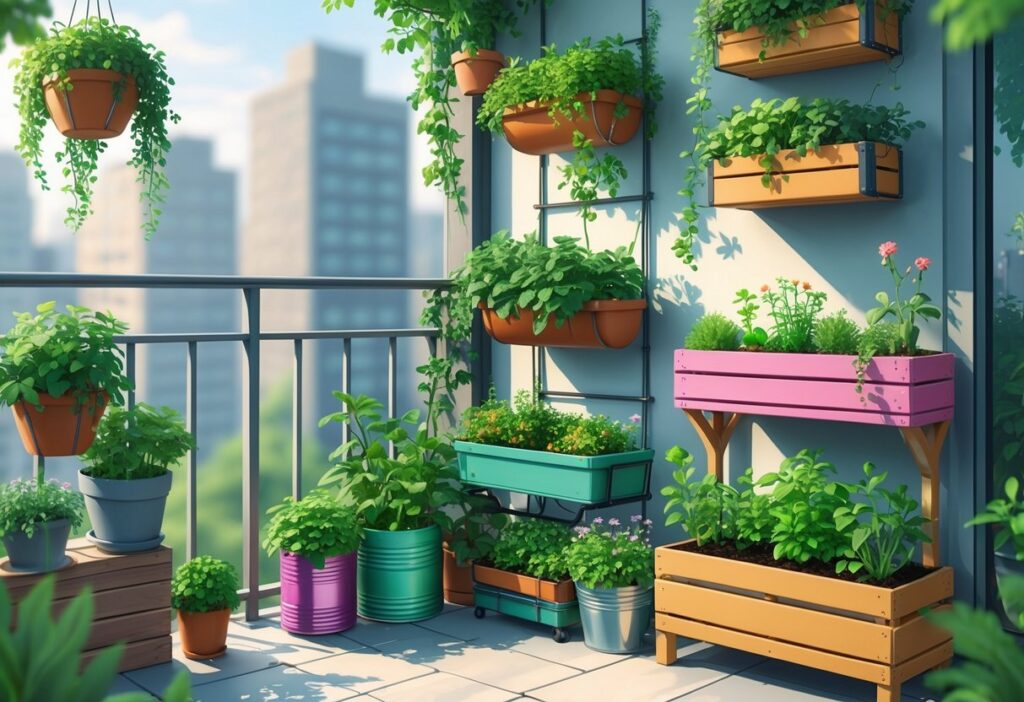
Smart container choices can double your growing space. Rail-mounted systems and stackable towers turn even the tiniest balcony into a mini farm.
Railing Planters and Balcony Edges
Railing planters hook right onto your balcony’s edge, freeing up floor space. They fit over standard railings or clamp tight.
Most are 24 to 36 inches long and 6 to 8 inches deep. That’s perfect for herbs, lettuce, and smaller flowers. Look for ones with drainage holes and trays to keep water from dripping onto neighbors.
What to look for:
- Adjustable clamps to fit your rail
- Built-in water reservoirs
- UV-resistant materials
- Wind-resistant design
Steel and resin planters hold up best outdoors. Lightweight plastic may blow away in strong gusts.
Put railing planters where they’ll catch the most sun. Most veggies want 6 to 8 hours of direct light.
Window Boxes and Planter Boxes
Window boxes add charm and greenery while using vertical space. They mount under windows or along balcony edges.
Standard window boxes are 18 to 48 inches long. Go at least 8 inches deep for herbs, 12 inches for veggies like cherry tomatoes.
Common materials:
| Material | Pros | Cons |
|---|---|---|
| Cedar | Natural, weather-resistant | Needs sealing sometimes |
| Fiberglass | Light, tough | Costs more |
| Metal | Durable, modern | Gets hot in sun |
Secure boxes with heavy brackets. A full 36-inch box can weigh 40 to 60 pounds when watered.
Plant trailing varieties like strawberries or cherry tomatoes in the front. Put taller herbs like basil in the back.
Stackable and Modular Planter Options
Stackable planters build your garden upward. You can add or remove levels as your needs change.
Tiered planters let you grow more in less space. Most systems have 3 to 6 levels in a 4-foot tower.
Why they’re great:
- Use 75% less floor space than regular pots
- Expand or shrink as needed
- Water drains down between levels
- Ideal for herbs and greens
Tower planters are best for shallow-rooted plants. Strawberries, lettuce, and herbs love them. Skip deep-rooted veggies like carrots or big plants like full-sized tomatoes.
Put heavier plants at the bottom for stability. Water from the top and let it trickle down.
Unique and Upcycled Container Ideas
Upcycled containers add personality and cut down on waste. Lots of household items can become planters with a few tweaks.
Old buckets and shoes make quirky planters. Always drill drainage holes so roots don’t get soggy.
Fun upcycled options:
- Rain gutters for shallow plants
- Wooden crates lined with fabric
- Large tin cans for herbs
- Worn-out boots for trailing flowers
Plastic bottles work for hanging gardens. Cut them sideways and hang from a wall or railing—great for lettuce and herbs.
Aim for containers at least 6 inches deep. Shallow pots dry out fast and stunt roots.
If you use metal containers, paint them light colors so they don’t overheat in the sun. Dark ones can get hot enough to harm roots.
Best Plants for Balconies and Small Gardens
Small spaces call for smart plant picks—compact varieties, vertical growers, and multi-use plants like herbs you can eat.
Choosing Plants for Limited Space
Size really matters when picking plants for small gardens. Look for dwarf or compact types that naturally stay small.
Trailing plants suit hanging baskets. They grow downward, saving space. Try trailing petunias, ivy, or sweet potato vine.
Go vertical with climbing plants:
- Morning glories
- Clematis
- Small cucumbers
- Cherry tomatoes
Multi-purpose plants give you more bang for your buck. Lavender smells great and draws bees. Marigolds look pretty and help keep pests away.
Match your plants to your sunlight. Full sun is 6+ hours. Partial shade means 3-6. Deep shade is less than 3.
Container size affects plant health. Small pots dry out quickly and stunt roots. Use the biggest containers you can fit.
Don’t forget your climate zone. Some plants need shelter from wind on high balconies. Plants bred for containers often do best in tight spaces.
Growing Succulents and Low-Maintenance Options
Succulents need barely any water or fuss. They store moisture in thick leaves and stems.
Honestly, they’re perfect if you’re busy or just starting out. Popular, easy succulents include:
- Jade plants
- Aloe vera
- Echeveria
- Sedum varieties
Most succulents want bright light, but not scorching sun. A south-facing window or a bright balcony usually does the trick.
Water succulents only when the soil feels dry. Too much water? That’s a fast way to kill them. Always use pots with drainage holes.
Snake plants thrive even if you forget about them for a while. Their tall, striped leaves add height, and they help clean your indoor air.
Pothos vines grow in water or soil. They handle low light and skipped waterings. The trailing vines look great in hanging planters.
ZZ plants have glossy leaves and need water just once a month. They grow slowly, so they’re perfect for small spaces.
Check out these low-maintenance options for small balconies. They barely need daily attention but still look amazing.
Selecting Fresh Herbs and Edibles
Fresh herbs give you the best bang for your buck in a small space. A $3 basil plant can replace a ton of grocery store clamshells.
Easy herbs for beginners:
- Basil (loves warmth)
- Mint (grows fast, keep it in its own pot)
- Parsley (handles cool weather)
- Chives (perennial, comes back every year)
Most herbs need about 4-6 hours of sun each day. If you live somewhere hot, morning sun with afternoon shade is ideal.
Edible flowers bring color and flavor. Nasturtiums taste peppery in salads. Pansies and violas are sweet. Marigold petals add a pop of color to dishes.
Cherry tomatoes do great in containers and produce more fruit than big varieties. Look for determinate types that stay compact.
Lettuce and spinach grow fast when it’s cool. Plant new seeds every couple of weeks for a steady harvest.
Strawberry plants work perfectly in hanging baskets. The fruit dangles down, making it super easy to pick. Everbearing types give you berries all season.
Small pepper plants like Thai chilis stay under two feet tall. One plant can keep you stocked with peppers for months.
Try these space-friendly edible plants. They let you snip fresh ingredients right from your balcony whenever you need them.
Design Ideas and Inspiration for Balcony Gardens
Turn even the tiniest balcony into a leafy retreat with a few smart tweaks. You can make every inch count by going vertical, picking clever furniture, and playing with colors for year-round appeal.
Small Balcony Garden Makeovers
Your tiny balcony can totally become a green paradise. Creative balcony garden ideas focus on using walls and vertical space when you’re short on floor area.
Wall-mounted solutions are a game changer for tight spots. Install brackets or trellises on bare walls. Hang lightweight pots filled with trailing plants like petunias or compact herbs.
Hanging baskets add greenery without hogging the floor. Coconut coir-lined baskets drain well. Use ceiling hooks or rails and hang baskets at different heights for a layered look.
Railing planters line your balcony edges with color. These fit snugly on most railings. Fill them with marigolds, oregano, or trailing flowers for quick impact.
Got an old ladder? Lean it against the wall and use the rungs for small pots. Put lighter plants up top to keep things balanced.
Balcony Garden Ideas for Comfort and Function
Mix relaxation and greenery with smart, multi-use pieces. Small balcony garden designs really shine when everything does double duty.
Folding furniture keeps things flexible. Pick weather-resistant tables and chairs that fold flat when you need more space for plants.
Look for tables with built-in planter compartments. They double as dining spots and plant homes. Glass tops make cleaning up a breeze.
Plant shelves give you tiered displays without eating up space. Stack plants by height—tall ones go up top. Use waterproof trays to catch drips and protect your floor.
Metal plant stands add a bit of style and help you layer your plants. Pop them in corners or by the railing. They’re great for trailing plants or ornamental grasses that add texture.
Seasonal Styling and Color Themes
Think about your colors to keep things looking pulled together all year. Light and cool tones can make a small balcony feel bigger and brighter.
Spring themes lean into fresh greens and soft pastels. White, pale blue, and yellow pots bounce light around. Early bloomers like pansies and primroses show off seasonal color.
Summer displays can go bold. Deep reds, bright oranges, and purples mix well with lush greens. Heat-tolerant plants like marigolds and petunias thrive in the sun.
Fall arrangements look best in warm, earthy tones. Terracotta, bronze, and gold pots pair with mums, ornamental cabbages, and shrubs with autumn leaves.
Winter styling is all about evergreens and subtle containers. Focus on textures over flowers. Silver, white, and wood planters look great with bare branches.
Mirrors can double your plant displays and bounce light around. Stick a weatherproof mirror behind your favorite grouping to make the space feel bigger.
Maintenance and Care Tips
Small balcony gardens need clever watering and smart light management to really thrive. Rotating your plants and using eco-friendly tricks keeps everything healthy without a ton of work.
Efficient Watering and Drainage Solutions
Container plants dry out way faster than those in the ground. In hot weather, check the soil every day.
Self-watering planters help by keeping soil evenly moist. They come with built-in reservoirs that slowly feed your plants.
Try these watering habits:
- Water early in the morning or evening so less evaporates
- Stick your finger in the soil an inch or two deep before watering
- Water until it drains out the bottom
- Group plants that need the same amount of water
Drainage is everything for healthy pots. Drill extra holes if yours don’t drain well. Toss in some pebbles or broken pottery at the bottom.
Balcony containers dry out fast, especially in summer. A soil moisture meter can save you from guessing.
Drip irrigation or soaker hoses work well for lots of containers. They save you time and deliver water right to the roots.
Light Management and Plant Rotation
Balconies rarely get even light. South-facing ones get sun all day, while north-facing spots stay cooler.
Watch how the sun moves on your balcony. Note which corners get morning rays and which get shade.
Move your pots around every week so all your plants get their turn in the sun. Put basil and rosemary in the brightest spots. Leafy greens and ferns do better in the shade.
Some rotation tricks:
- Turn containers 90 degrees every week
- Shift plants as the sun shifts with the seasons
- Use stands and shelves to raise or lower plants for better light
Reflective surfaces boost brightness. Place mirrors or white boards behind your plants to help them soak up more sun.
If your balcony’s shady, add grow lights. LED panels work great for herbs and greens in winter.
Sustainable Practices for Small Spaces
You can keep a balcony garden green and eco-friendly with a few habits. Composting and saving water both cut waste and improve your plants’ health.
Kitchen composting fits easily into apartment life. Small bins on your counter turn scraps into rich soil. Composting is totally doable even with barely any space.
Water-saving tricks:
- Catch rainwater in buckets
- Reuse cooled cooking water
- Track rainfall with a simple gauge
- Mulch pots to keep moisture in
Companion planting packs more into less space. Plant basil with tomatoes or marigolds with peppers. These combos keep pests away without chemicals.
Save seeds from your best plants for next year. Just dry them out and stash them in labeled envelopes somewhere cool.
Stick to organic fertilizers like compost tea or worm castings. They feed slowly and build up your soil.
Maximizing Usability and Enjoyment
Hanging baskets and comfy seating can turn even a cramped balcony into a spot you’ll actually use. A little planning keeps things safe and makes every inch count.
Incorporating Hanging Baskets and Suspended Gardens
Hanging baskets let you grow more vertically and leave your floor open. Lightweight coconut fiber or plastic baskets put less strain on your railings and ceiling hooks.
Best Plants for Hanging Baskets:
- Cherry tomatoes
- Strawberries
- Trailing herbs like thyme
- Petunias and other trailing flowers
- Lettuce and spinach
Hang your baskets at different heights for a layered look. Keep some at eye level for easy picking, and others higher up for trailing plants.
Use adjustable pulleys to lower baskets for watering. It saves you from stretching or climbing on chairs—nobody needs that.
Keep baskets 18-24 inches apart for good airflow. Too close, and you’ll get humidity and blocked sunlight.
Watering Tips:
- Use drip trays under baskets
- Try self-watering baskets
- Water early in the day to avoid fast evaporation
Balcony Seating and Layouts
Comfy seating near your plants makes you want to hang out and tend your garden. Pick furniture that does double duty to save space.
Multi-Purpose Seating Options:
| Furniture Type | Storage Benefit | Seating Capacity |
|---|---|---|
| Storage bench | Garden tools, soil | 2-3 people |
| Ottoman with lid | Small pots, seeds | 1 person |
| Folding chairs | None (stackable) | 1 person each |
Set seating 3-4 feet from your plants so you can water and harvest without squeezing past. Face chairs toward your best plant displays to enjoy the view.
Layout Tips:
- Put tall plants against the wall
- Leave 24-30 inch paths for walking
- Tuck seating into corners
- Use folding tables that clip onto railings
Try setting up zones—have one area for potting and another for relaxing with coffee. It’s your space, after all, so make it work for you.
Safety and Structural Considerations
Check your balcony’s weight capacity before piling on planters and soil. Most balconies can handle 40-50 pounds per square foot, but you’ll want to double-check with building management just to be sure.
Weight Distribution Tips:
- Spread heavy planters around the whole balcony.
- Place the biggest containers close to support walls.
- Use lightweight potting mix instead of regular garden soil.
- Fiberglass or plastic pots are lighter than ceramic, so they’re usually a smarter pick.
Secure all hanging baskets with hardware that’s actually up to the job. Ceiling hooks should be rated for at least twice the weight of your planted basket when it’s wet—nobody wants a surprise crash.
Wind Protection Measures:
- Put up windscreens if your balcony gets battered by the wind.
- Use sturdy stakes for taller plants.
- Skip top-heavy container setups—those just invite trouble.
- Cluster plants together so they help shield each other from gusts.
Make sure your balcony drains well to avoid water damage. Put saucers under every container and check drainage holes now and then.
Lay down non-slip mats under planters and in spots where you walk. Wet balcony surfaces can get slippery fast, especially when you’re juggling watering cans or moving pots around.
